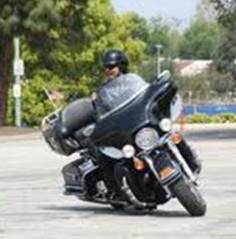Safety Part I
by Michael Bradbury
In order to write an article you need a topic. Duh! So my article started with this major dilemma like perhaps others may have experienced who have done this before. And while the Kaution Korner Safety Article narrows that down a bit to the subject of Motorcycle Safety I still struggled deciding on the topic. I had a few ideas like the safety merits of riding with underwear on vs. not wearing underwear. I think those merits are glaring and obvious. And I probably couldn’t stretch that into an entire article anyways. It probably wouldn’t fit this purpose well. And it could rub people the wrong way.
Seriously, when I first started driving a motorcycle on my 1996 A.C.E. Honda Shadow, I started riding more and more with larger groups. I was doing the big charity rides (i.e The Little Angels, Toys For Tots, Love Inc., etc.) and I saw some crazy stuff and it made me realize that safe group riding is not an automatic undertaking. Safe motorcycle and group riding takes intent and effort. So I started to question what exactly is meant by Motorcycle Safety. This is fairly clear and obvious so simply put, I define safe Motorcycle driving as operating my motorcycle in a manner that is not harmful to myself and those around me.
Now with that definition, how do I do it? How do I operate my Motorcycle safely? I offer here some of the basic guidelines I use to hopefully achieve the operation of my 2010 Harley-Davidson Street Glide or any motorcycle I drive in the best way that is not harmful to myself or those around me. These are some of my recommendations:
1:Practice – Practice what you learn. The best thing to do after your training is to become a practitioner and to do what you learned. But sometimes you need to work on a maneuver to gain confidence and practice builds that. Practice will also help to identify your weakness and indicates what you need to work and focus on when you practice. Take care, depending on what you are practicing to have a dedicated area like an empty parking lot if needed for the type of action you are practicing. Manuevers like high speed braking must be performed legally when you have plenty of room on empty roads without traffic. Use common sense and caution when practicing since these are not all actions you may have mastered yet.
2:Awareness – Awareness of a lot of elements contributes to the overall safe operation of your bike. Awareness of your instrument readings, velocity, direction, balance, sound, vibrations, feel all contribute to the inputs coming from your bike which are telling you the state of things. The next level is similar to fighter pilots and is called Situational Awareness. This is where you are gauging where you are relative to all the other traffic and road activity and conditions surrounding you. You are aware of your “situation” in this sphere of activity but now you are tracking this changing picture so you predict, track and react to avoid harmful situations. Another analogy is like playing a chess game where you are trying to predict your opponents next 2 or 3 moves. To do this you must scan ahead and not get stuck just focusing on the few feet in front of you. You need to have an expanded horizon to increase your available reaction time for any particular traffic situation.
3:Road Surfaces – Always be aware of the road surfaces you are riding on and drive accordingly. Gravel requires care with speed so slow down! Use only your rear brake when slowing. Add more stopping distance than you even think is required. Asphalt requires much care when wet and especially after becoming wet in the last 20 minutes or less. The road oil will float on the water before getting washed away and can make the surface more slippery. Apshalt can also be slippery at extremes of temperature both cold and hot. And those wonderful little road repair lines which look like “veins”, also known as tar snakes are slippery almost all the time and should get your attention whenever the road is predominantly covered with them.
4:Train and Learn – Take a Top Cats Group Riding Safety Seminar. This is something you should do to learn the how-to’s in operating your bike as safely as possible and while riding in groups. Continue your education and take a beginners or advanced motorcycle riding course, whichever you feel most comfortable in doing. There are many sources for courses such as your local Harley-Davison dealerships, the Rider’s Edge Training Course from Harley-Davidson as well as places in our area like LRN2RYD, a company run by one of our own Top Cats, Larry Scalzitti (see www.lyrn2ryd.com for more information). All of these are great sources for training. The point here is to train to learn and gain the knowledge.
5:Intersections – I had read before that 75% of all motorcycle accidents occur in intersections. Now I can’t remember the source but to me it only is common sense that intersections with their opposing and crossing traffic are dangerous. You should always be on your guard when approaching and travelling through intersections. I always study the situation, decide on my actions and, if I am driving through the green light, shift my weight to cover my rear brake and my left hand to cover the horn. I want to be prepared as best I can to react for that guy that is trying to beat the yellow light or not following the law at all and zooming through a red light.
While being mindful of these principles is not a guarantee, you will lower your risk of being harmed and harming others while operating your motorcycle if you follow them Continue to learn and practice. I believe Motorcycle safety is a continual process of improvement and applying what I learn.
Michael Bradbury





